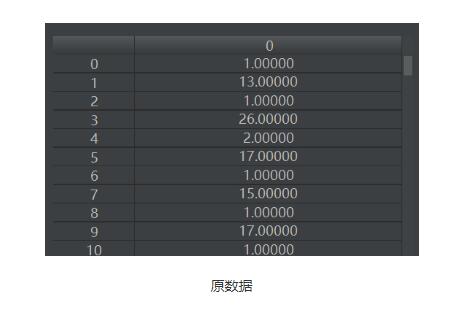java sleep()和wait()的區(qū)別點總結(jié)
wait()是Object的方法,sleep()是Thread的方法。
wait()必須采用同步方法,不需要sleep()方法。
線程在同步方法中執(zhí)行sleep()方法,不釋放monitor鎖,wait()方法釋放monitor鎖。
短暫休眠后,sleep()方法會主動退出阻塞,而wait()方法需要在沒有指定wait時間的情況下被其他線程中斷才能退出阻塞。
2、實例import java.text.SimpleDateFormat;import java.util.Date;public class TestSleepAndWait {public static void main(String[] args) {new Thread1().start();try {Thread.sleep(100);} catch (InterruptedException e) {e.printStackTrace();}new Thread2().start();}}class Thread1 extends Thread{private void sout(String s){System.out.println(s+' '+new SimpleDateFormat('HH:mm:ss:SS').format(new Date()));}@Overridepublic void run() {sout('enter Thread1.run');synchronized (TestSleepAndWait.class){//wait只能在同步代碼塊或者同步方法中使用sout('Thread1 is going to wait');try {TestSleepAndWait.class.wait(); // 這里只能使用持有鎖TestSleepAndWait.class.wait(),使用其他對象則報錯java.lang.IllegalMonitorStateException} catch (InterruptedException e) {e.printStackTrace();}sout('after waiting, thread1 is going on');sout('thread1 is over');}}}class Thread2 extends Thread{private void sout(String s){System.out.println(s+' '+new SimpleDateFormat('HH:mm:ss:SS').format(new Date()));}@Overridepublic void run() {sout('enter Thread2.run');synchronized (TestSleepAndWait.class){//wait只能在同步代碼塊或者同步方法中使用sout('Thread2 is going to notify');TestSleepAndWait.class.notify(); 這里只能使用持有鎖TestSleepAndWait.classsout('thread2 is going to sleep 10ms');try {Thread.sleep(10);} catch (InterruptedException e) {e.printStackTrace();}sout('after sleeping, thread2 is going on');sout('thread2 is over');}}}
內(nèi)容擴展:
/** * */package com.b510.test;/** * java中的sleep()和wait()的區(qū)別 * @author Hongten Java學習交流QQ群:589809992 我們一起學Java! * @date 2013-12-10 */public class TestD { public static void main(String[] args) { new Thread(new Thread1()).start(); try { Thread.sleep(5000); } catch (Exception e) { e.printStackTrace(); } new Thread(new Thread2()).start(); } private static class Thread1 implements Runnable{ @Override public void run(){ synchronized (TestD.class) { System.out.println('enter thread1...');System.out.println('thread1 is waiting...'); try {//調(diào)用wait()方法,線程會放棄對象鎖,進入等待此對象的等待鎖定池TestD.class.wait(); } catch (Exception e) {e.printStackTrace(); } System.out.println('thread1 is going on ....'); System.out.println('thread1 is over!!!'); } } } private static class Thread2 implements Runnable{ @Override public void run(){ synchronized (TestD.class) {System.out.println('enter thread2....');System.out.println('thread2 is sleep....');//只有針對此對象調(diào)用notify()方法后本線程才進入對象鎖定池準備獲取對象鎖進入運行狀態(tài)。TestD.class.notify();//==================//區(qū)別//如果我們把代碼:TestD.class.notify();給注釋掉,即TestD.class調(diào)用了wait()方法,但是沒有調(diào)用notify()//方法,則線程永遠處于掛起狀態(tài)。try { //sleep()方法導致了程序暫停執(zhí)行指定的時間,讓出cpu該其他線程, //但是他的監(jiān)控狀態(tài)依然保持者,當指定的時間到了又會自動恢復運行狀態(tài)。 //在調(diào)用sleep()方法的過程中,線程不會釋放對象鎖。 Thread.sleep(5000);} catch (Exception e) { e.printStackTrace();}System.out.println('thread2 is going on....');System.out.println('thread2 is over!!!'); } } }}
到此這篇關于java sleep()和wait()的區(qū)別點總結(jié)的文章就介紹到這了,更多相關java sleep()和wait()的區(qū)別內(nèi)容請搜索好吧啦網(wǎng)以前的文章或繼續(xù)瀏覽下面的相關文章希望大家以后多多支持好吧啦網(wǎng)!
相關文章:
1. python實現(xiàn)讀取類別頻數(shù)數(shù)據(jù)畫水平條形圖案例2. python中PyQuery庫用法分享3. python操作數(shù)據(jù)庫獲取結(jié)果之fetchone和fetchall的區(qū)別說明4. JavaScript實現(xiàn)組件化和模塊化方法詳解5. 使用css實現(xiàn)全兼容tooltip提示框6. python 爬取嗶哩嗶哩up主信息和投稿視頻7. JSP+Servlet實現(xiàn)文件上傳到服務器功能8. CSS3實現(xiàn)動態(tài)翻牌效果 仿百度貼吧3D翻牌一次動畫特效9. php使用正則驗證密碼字段的復雜強度原理詳細講解 原創(chuàng)10. Python編寫nmap掃描工具

 網(wǎng)公網(wǎng)安備
網(wǎng)公網(wǎng)安備